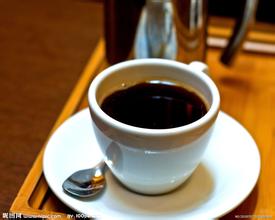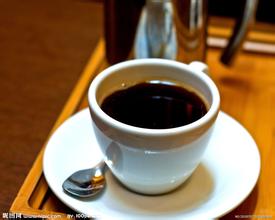Introduction of Burundian boutique coffee bean flavor and taste manor producing area
Coffee spread abroad from Ethiopia around the 15th century. From the great bazaar in Gundel, the ancient capital of Ethiopia, merchants carried coffee beans northwest to Sudan, to Egypt and Mediterranean countries, and eastward across the Red Sea to Yemen and the Arabian Peninsula. People in the Middle East call it "Arabica Coffee" and have been widely drunk since then. Later, it spread to the far East and finally across the Pacific Ocean to the American continent. Now, Brazil is the new largest producer of coffee. There is also one of the largest Ethiopian Arabica coffee markets in the United States. When coffee was first discovered, the wild shrub plant had no name. The local people named him after the "Kafa" where he grew up. Later, the name of the world's "coffee" evolved from "kaffa" in the mountains of the Qima region of southwestern Ethiopia, where a wild shrub bearing small red fruits grew. A shepherd kept making noise when he found that his goats had eaten the bush fruit. As a result, he also curiously took some off and chewed it in his mouth, and soon felt excited, because he chewed too much and he was in a state of ecstasy. When the news reached a nearby Orthodox monastery, a group of monks chewed with curiosity and had the same effect. So monks from all sides came to pick and chew this extraordinary "magic" little red fruit, so excited that they could not sleep for a long time, thus affecting their normal religious activities. So the church regarded the small red fruit as a "devil bean" and banned its followers from eating it. Therefore, for a long time after coffee was discovered, Ethiopians did not eat coffee and did not know how to make coffee tea. Burundi is a small landlocked country located on the border of eastern and central Africa, across the Nile and Congo basins. the landform is mainly hilly and mountainous, with excellent coffee cultivation altitude. The history of coffee cultivation in Burundi is not long, its coffee planting industry is carried out entirely in the form of small family farms, there is a great difference in quality, and years of war and social unrest have made its coffee planting industry very chaotic. But I have to admit that it has the potential to produce high-quality coffee.

Important Notice :
前街咖啡 FrontStreet Coffee has moved to new addredd:
FrontStreet Coffee Address: 315,Donghua East Road,GuangZhou
Tel:020 38364473
- Prev

Introduction of Puerto Rico boutique coffee flavor manor introduction to Puerto Rico coffee producing areas
Puerto Rico's coffee beans are carefully planted, pure, aromatic and heavy, of which the best coffee is Yauco Selecto, which means Selecto. Yaocote Coffee is grown only on three farms in the southwest of the island, San Pedro, Caracolillo and La Juanita. It is a truly high-quality coffee with a strong flavor and a long aftertaste. Puerto Rico
- Next

Introduction to the flavor and taste of Ugandan coffee beans
Uganda has good natural conditions, fertile land, abundant rainfall and suitable climate, which is very suitable for the development of agriculture and animal husbandry. Agriculture and animal husbandry occupies a leading position in the Ukrainian national economy. The output value of agriculture and animal husbandry accounts for 70 percent of the GDP, and the export volume of agriculture and animal husbandry accounts for 95 percent of Ukraine's total exports. Uganda is rich in mineral resources, including copper, tin, tungsten and green.
Related
- Detailed explanation of Jadeite planting Land in Panamanian Jadeite Manor introduction to the grading system of Jadeite competitive bidding, Red bid, Green bid and Rose Summer
- Story of Coffee planting in Brenka region of Costa Rica Stonehenge Manor anaerobic heavy honey treatment of flavor mouth
- What's on the barrel of Blue Mountain Coffee beans?
- Can American coffee also pull flowers? How to use hot American style to pull out a good-looking pattern?
- Can you make a cold extract with coffee beans? What is the right proportion for cold-extracted coffee formula?
- Indonesian PWN Gold Mandrine Coffee Origin Features Flavor How to Chong? Mandolin coffee is American.
- A brief introduction to the flavor characteristics of Brazilian yellow bourbon coffee beans
- What is the effect of different water quality on the flavor of cold-extracted coffee? What kind of water is best for brewing coffee?
- Why do you think of Rose Summer whenever you mention Panamanian coffee?
- Introduction to the characteristics of authentic blue mountain coffee bean producing areas? What is the CIB Coffee Authority in Jamaica?

